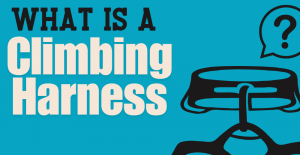How to use Trango Harness, maintenance and lifespan with instructional pictures.
Zero G
Description
The Zero G is a super light unpadded mountaineering harness designed for wear with a backpack during glacier travel & mountaineering missions. Perfect for long days where you need a harness, but don't want the weight or bulk of traditional designs, the Zero G features a Dyneema belay loop for easy rope management, 2 gear loops for organization, and our Fast Screw Carry system to quickly access crucial gear. Weighing in at only 171g and packing small for easy stashing when not in use, there's no excuse to not bring it on your next mission!
- Lightweight and low profile design packs small when not needed
- Low profile unpadded waist belt design fits cleanly under pack waist belts for comfortable wear while carrying loads
- Fast Screw Carry system keeps ice screws out and accessible for immediate deployment during self & crevasse rescue
- Quick drop leg loops allow the harness to be donned and removed easily over crampons, skis, etc.
- Full sized dyneema belay loop for easier rope management
Retail price
When you click a link below and then checkout online, no matter what you buy (climbing gear or not), we get a small commission that helps us keep this site up-to-date. Thanks!
Weight (g)  WeightIn grams, the weight, as stated by the manufacturer/brand. If there are differences in weight (due to multiple sizes or optional accessories) we'll list them here. The default weight is the middle-most size, often this is size M. | 171 g |
| Fit | Unisex |
| Sizes | XS, S, M, L, XL |
Gear Loops  Number of Gear LoopsGear loops are used to hold gear (quickdraws, cams, etc) onto your harness. 4 gear loops is most common. 
0 - 1 Gear LoopsMost often on full body harnesses or guide/gym style harnesses. 2-3 Gear LoopsMostly found on lighter harnesses made for [ski] mountaineering or high-end sport climbing where weight is a high priority. 4 - 5 Gear LoopsThe standard/most common number for climbing harnesses. Perfect for sport and trad. More Than 6 Gear LoopsDesigned for long multi-pitch and big wall climbing, found on harnesses made to hold the maximum amount of gear. Worth ConsideringOccasionally, the number of gear loops will change on a harness model depending on the size. There could be 7 gear loops for the med/large but only 5 gear loops for the xsmall/small. In this case we list the highest number for the filters, and then write an explanation on the product page like, “Size S/XS can only fit 5 gear loops.” | 2 Gear loops |
Ice Clip Slots  Ice Clip SlotIce clipper slots are made to fit a carabiner that holds ice screws. These slots are generally only used by ice climbers but there is no disadvantage to having them on your harness. 
Less than 40% of harnesses will have ice clipper slots. And those harnesses will usually have 2 or 4 slots, often located next to, or between, the gear loops. | No, 0 |
| Belay / Tie-In | One Loop |
| Waist Buckle Type | Quick Adjust |
| Leg Buckle Type | Clip |
| Drop Seat | No |
Haul Loop  Haul LoopTrad climbers often look for a haul loop as they're intended to haul a rope (second line) or pack (while you climb the chimney). 
A haul loop can also hold shoes or other accessories. Although not the intended use, it is also commonly used to hold a chalk bag. | No |
| Certification | |
| Size Chart | S (will fit the upper range of XS)
Waist : 61-74 cm / 24-29 in M
Waist : 71-84 cm / 28-33 in L (will fit the lower range of XL)
Waist : 81-97 cm / 32-38 in (we converted inches to centimeters) |
No reviews yet.
If you know of a good product video that should be here, let us know, and we'll put it up.
If you're looking for gear videos in general, check out our Vimeo and YouTube channels to see the newest gear.
A pictoral representation of UIAA-105 and EN-12277 standards for harnesses.
The UIAA equipment standard provides a baseline for equipment performance in a test lab under controlled conditions on new equipment. Although these test conditions are relevant to the conditions encountered climbing, conditions encountered at the crags and the condition of the equipment are equally important. This recommendation from the UIAA member federation The British Mountaineering Council (BMC) provides vital equipment information that is NOT explicitly addressed in the standard, particularly failure modes of the equipment and recommendations for the use, inspection, maintenance, and retirement of equipment.














